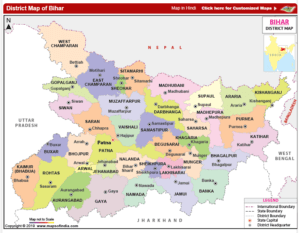Bihar has experienced a remarkable transformation over the years through the introduction and expansion of Western education, including technical education. The development of the education sector has played a pivotal role in empowering the youth, enhancing employability, and fostering socio-economic growth. This article delves into the journey of Bihar’s education system, from its inception to the present day, and highlights the impact of Western education in shaping the state’s future.

Table of Contents
Background of Western Education in Bihar
The roots of Western education in Bihar can be traced back to the British colonial period. With the establishment of the British East India Company’s rule, the need for administrative and clerical personnel led to the introduction of English-medium schools. The first modern school, Patna Collegiate School (now known as Patna High School), was founded in 1835, laying the foundation for Western education in the state.
Influence of Western Education on Bihar’s Society
The introduction of Western education in Bihar had a profound impact on its society. It not only brought new learning methodologies and subjects but also challenged traditional norms. Western education promoted rational thinking, scientific temper, and critical analysis, encouraging individuals to question age-old beliefs and practices.
Role of Technical Education in Bihar’s Development
As the world progressed towards industrialization and technological advancements, the demand for technical education surged. Bihar recognized the importance of preparing its youth for the changing job landscape and thus emphasized the growth of technical education. Institutes such as the Indian Institute of Technology (IIT) Patna and the National Institute of Technology (NIT) Patna were established, offering world-class education in engineering and technology.
Government Initiatives for Educational Expansion
Over the years, the government of Bihar has taken significant initiatives to expand and improve its education system. Special attention has been given to promoting primary and secondary education, bridging the gender gap, and encouraging enrollment in higher education institutions. Scholarships and financial aid programs have been introduced to support economically disadvantaged students, making education more inclusive.
Challenges and the Way Forward
Despite the progress, Bihar’s education system faces several challenges, such as inadequate infrastructure, low teacher-student ratios, and quality disparities in rural and urban areas. The state is working towards addressing these issues by investing in infrastructure, teacher training programs, and digital learning initiatives.
Conclusion
The introduction and expansion of Western education, including technical education, have significantly transformed Bihar’s socio-economic landscape. Through a journey that began during the colonial era, Bihar’s education system has evolved to empower its youth and prepare them for the challenges of the modern world. As the state continues to invest in education and address the existing challenges, there is optimism for a future where every individual in Bihar has access to quality education and the opportunity to realize their full potential. The transformation of Bihar’s education system is not only a testament to its resilience but also a driving force behind the state’s progress towards a brighter and more prosperous future.
Important Links